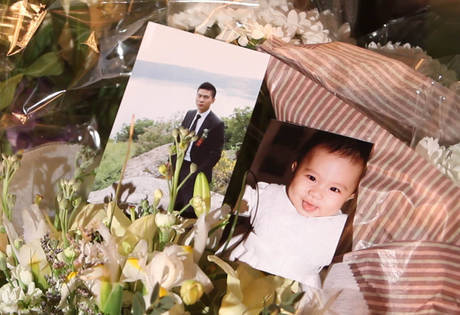China is Finally Near
ROME – Back in 1967 Marco Bellocchio made a film called “China Is Near” (La Cina e’ Vicina) starring Glauco Mauri. At that time Bellocchio’s concept of China was solely political, and in paint besides—a Maoist slogan smeared on a wall near the headquarters of the Italian Socialist party. At the time China was not otherwise near. Rome had just acquired its first Chinese restaurant, on Via Capo le Case, and an Italian friend liked to recall that, as a youth living on Via Babuino, his father would take him for a Sunday walk near Palazzo Chigi, the Italian White House, so that the boy could gawk at the “Chinaman” who sold ties there, the sole Chinese in town.
Forty-five years later it is China that is staring at Italy, with the Italians rather miffed. “The China Story” is a 40-episode, $18 million Chinese soap opera being filmed largely in Lucca, co-directed by Kong Sheng and Li Ziue, from a script by a noted writer, Gao Mantang. Center of the story is a fairly prosperous family which emigrates from Wenzhou to Tuscany. After reverses in the family’s fortunes, the Chinese businessman’s daughter, young Amy, is obliged to work in a tavern (osteria), but eventually winds up owning a successful clothing shop in the textile city of Prato. Problem is that along the way Amy clashes with a Prato textile manufacturer so seriously that, according to Italian journalist Riccardo Bianchi, writing in the Dec. 9 Venerdi della Repubblica, Prato makes a “brutta figura” (a bad image). The Prato town council did not appreciate this, reportedly, because they had given considerable hospitality to the Chinese movie actors and crew. On the other hand, “the mayor is helpful to the protagonist,” and the city appears welcoming to the immigrants from China.
And now, the reality show. Last week in Torpignattara, a near-suburb of Rome, a Chinese shop owner named Zhou Zeng, his wife Lia and baby daughter, Joy, six months old, were leaving their store when two men whose faces were hidden by motorscooter helmets held a gun at them and demanded the take. The wife, who speaks little Italian, instinctively gripped her handbag tighter; the husband shouted. One of the two masked gunman responded by shooting to kill. Both baby and husband were killed.
At this brutality the entire neighborhood reacted, placing two hundred candles and offerings of flowers on the spot where the father and child were murdered. The outpouring of sincere grief and shock among Italians as well as in the Chinese community—particularly because of the murder of a baby—is only slightly tempered by the admission of the wife, Lia Zhou, that she was carrying in her bag E.10,000. Why? As she admitted to police, it is because she acted as an improvised agency who sent cash back to China for her fellow emigres, because they trusted her.
That the crime could be related to this illicit money moving is not excluded, nor is it proven that the two gunmen are Italian. And, whether tasteless or unfair, on the morning following the murders a radio news bulletin (GR2) reminded listeners that the Chinese community in Rome has introduced a considerable degree of crime, from prostitution, usury and protection racketeering to money laundering. It is clear that most of the crime is directed against the vast majority of honest Chinese citizens living and working in Italy. Nevertheless, that there is considerable inter-community crime has been true from the earliest wave of Chinese immigration here, as I was told by an Italian detective, expert in the Mafia before being reassigned to follow Chinese crime in Italy. Since that time the Italian police have actively recruited Chinese speakers.
While this matters to the Chinese community and to the Italian police, the point is another: that with some 150,000 (112,000 legal), with an annual increase of almost 5%, Italy is dealing with yet another community which is not being readily or gracefully integrated. In fact, the Chinese community in Rome of between 30,000 and 40,000 people reacted with fury. These are not the exploited hundreds of Chinese held in near-slave conditions making jeans and handbags in Tuscan lagers; these are the well-to-do. On the two streets near the Esquilino Hill, solidly occupied by Chinese shops and restaurants, outraged Chinese immigrants complained to anyone who would listen that they are insulted daily by the Italians, are constantly threatened with holdups to the point that they have hired vigilantes for protection, and that they have come to dislike Italy.
“Their capacity to adapt has brought the Chinese to settle slowly into ever more big Italian cities, and there are now Chinese communites of various dimensions in all Italy. There is no lack of episodes of intollerance which the numerous difficulties that inevitably touch upon every immigrant (language, bureaucracy, etc.), but at this point the Chinese are an integral part of the Italian economy,” according to a report by Associna, an association of Chinese in Italy (http://www.associna.com/it/associna). Indeed there is: while there is a definite drop in imports from China, down 17.6% over the past year, exports from Italy to China are stable at 0.4%, a fairly strong figure as compared with Italian exports to India, down by over 25%.
Trying to improve integration of Chinese in Italy, the Interior Ministry together with with the International Organization for Migration (an agency of the European Fund for Integration) is conducting experiments in cities with a high density of businesses owned by Chinese, like Milan and Prato, or which carry out commercial or financial activities, as in Rome. For their video in Italian, made with considerable input from Chinese in Italy, see:
Immigration is hardly a one-way street, and it is hardly surprising that educated young Italians are now migrating to China. “Once I was there I loved the life. I’m staying,” said one. In a report made two years ago by Emma Lupano in Il Sole 24 Ore, “When they discover China, Italian students rarely leave it behind—most end up not wanting to go home again.” For those attempting master’s or doctoral degree programs the challenge is the language, but because of the increase in a two-way exchange, opportunities are open for those who can master the language, including as interpreters and translators.
For those interested, there is a touching documentary— and highly praised by the Oxford University Italian studies center—directed by Sergio Basso, produced in 2010 by La Sarraz Pictures, on the Chinese living in Milan. It’s called “Made in Chinatown” in English and, in Italian, “Giallo a Milano”.






































i-Italy
Facebook
Google+
This work may not be reproduced, in whole or in part, without prior written permission.
Questo lavoro non può essere riprodotto, in tutto o in parte, senza permesso scritto.